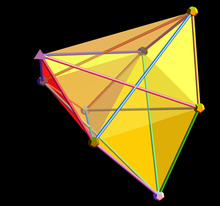
Physics theoretician Nima Arkani-Hamed, at the Institute for Advanced Study at Princeton, has recently suggested that maybe space and time are not what we think they are. In a recent interview with Natalie Wolchover, for a New Yorker article, he expressed renewed interest in a point made by Richard Feynman in 1964. [1] Feynman took note of the fact that when considering physical systems, it is very often the case that different explanations will produce equally good predictions of events. For example, when predicting the movements of two objects that are gravitationally attracted to each other, three different approaches will produce the same correct prediction. These are, Newton’s law of gravity (that says that objects exert a pull on each other); Einstein’s spacetime (that describes how space bends around massive objects), and the mathematics of what is known as the principle of least action which holds that moving objects follow the path that uses the least energy and is accomplished in the least time. The fact that it is possible to predict physical behavior with more than one mathematical idea could suggest that physics research is actually testing the mathematics more than the physical world. And so Arkani-Hamed has proposed that the universe is actually the answer to a mathematical question we have not yet discovered. From Wolchover’s article:
“The miraculous shape-shifting property of the laws is the single most amazing thing I know about them,” he told me, this past fall. It “must be a huge clue to the nature of the ultimate truth.”
Arkani-Hamed was encouraged in this when he and his colleagues succeeded in predicting the outcomes of subatomic particle interactions using only the volume of their newly discovered, and purely abstract geometric object called the amplituhedron.[2] These volume calculations are made without any reference to physical space or time. If we don’t need space and time to calculate particle interactions then, perhaps, the space and time in which we seem to live is not a fundamental aspect of our reality. Arkani-Hamed is considering that space and time emerge from some deeper structure. If the volume of the amplituhedron encodes the outcomes of particle collisions, maybe mathematical principles, like those that define the intersections of lines and planes, for example is the real fundamental thing. Arkani-Hamed has also found that celestial patterns, that describe the history of the universe, can be represented as geometric volumes. Like Max Tegmark, author of Our Mathematical Universe, Arkani-Hamed is inspired by the possibility that ultimately, it will be a “spectacular mathematical structure,” out of which the past, present, and future of everything emerge.[3] Tegmark’s argument goes more like this:
Remember that two mathematical structures are equivalent if you can pair up their entities in a way that preserves all relations. If you can thus pair up every entity in our external physical reality with a corresponding one in a mathematical structure…then our external physical reality meets the definition of being a mathematical structure – indeed, the same mathematical structure.
Given these kinds of considerations, I would argue that addressing the question of whether or not mathematics exists independently of us is far more complicated than we ever thought. And the possibility that space and time emerge from something more fundamental (like a spectacular mathematical structure) is one of the more extreme attempts to consolidate the physical with the abstract. Again from Wolchover’s article:
“The ascension to the tenth level of intellectual heaven,” he told me, “would be if we find the question to which the universe is the answer, and the nature of that question in and of itself explains why it was possible to describe it in so many different ways.”
[1] Natalie Wolchover, New Yorker Magazine, February 10, 2019
[2] Nima Arkani-Hamedm, Jacob L. Bourjaily, Freddy Cachazo, Alexander B. Goncharov, Alexander Postnikov, Jaroslav Trnka, Scattering Amplitudes and the Positive Grassmannian, arXiv:1212.5605
[3] Natalie Wolchover, Visions of Future Physics, Quanta Magazine, September 22, 2015


[…] I wrote about this discovery in March. […]